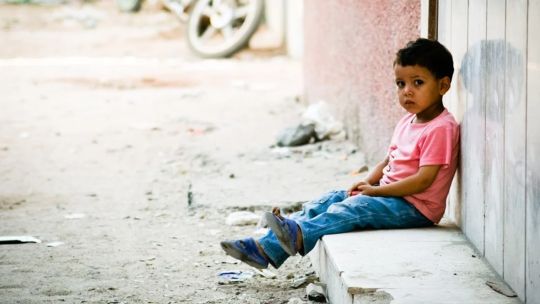
Food insecurity affecting the country’s children and adolescents is a structural problem observed in the current economic cycle, according to a new report.
The study, based on data collected by UCA Catholic University between 2010 and 2024, reveals growing food insecurity among Argentine infants. Although there has been a slight recovery in some indicators in recent years, the report shows malnourishment continues to be a serious structural problem.
Between 2010 and 2017, the percentage of children affected by food insecurity remained steady at around 20 percent, but the number then began to rise, reaching 37 percent in 2020.
Figures have improved since, but last year’s number was alarming: 35.5 percent – i.e., at least a third of the country’s children and adolescents suffer food deprivation.
Within this panorama, approximately half of affected children are experiencing serious situations, such as hunger from having nothing to eat.
Between 2010 and 2017, situations of grave deprivation ranged at below 10 percent but last year that percentage stood at 16.5 percent, implying that a growing number of children live in conditions of extreme food vulnerability.
Food insecurity is the lack of regular access to sufficient, safe, and nutritious food for an active and healthy life.
There are different levels of food insecurity, ranging from fears about the ability to obtain food to going without food, hunger or going days without eating.
Factors determining food insecurity
The UCA report reveals that the groups most affected by food insecurity are children coming from single-parent and/or numerous (with five or more members) homes, or those deemed poor in economic terms and headed by adults who are precariously employed or directly jobless.
Last year 43 percent of the children in single-parent homes and 45 percent in large families underwent situations of food insecurity.
Furthermore, 49 percent of the children in poor households and 51 percent of homes where the adults are precariously employed face severe food shortages.
As for geographic distribution, the report notes that since 2017 the Buenos Aires metropolitan area (AMBA) has been more affected by food insecurity than inland regions, although last year that gap narrowed due to the deteriorating situation in the provinces.
It was further detected that 44 percent of the children with learning deficiencies also experienced food insecurity last year.
A longitudinal analysis of the series shows that over the years, belonging to a numerous family with its adults in a precarious job situation have become determining factors for the increase of job insecurity.
Lower-income households have been seen as more vulnerable to this problem and although the AUH (Asignación Universal por Hijo) universal child benefit was not effective between 2020 and 2021, in recent years it appears to have had a positive impact, protecting the most vulnerable children.
The role of the AUH and precarious jobs
The analysis also highlights that in the 2022 to 2024 period, the AUH played a protective role against food insecurity, especially in a context of inflation being contained and the transfer gaining value.
During this period, 44 percent of the children did not experience food insecurity and 15 percent improved their situation while it worsened for nine percent with a further 15 percent undergoing chronic food insecurity.
Precarious jobs, on the other hand, increased the probability of suffering food deprivation with a negative impact especially notable in the households whose heads are informally employed.
– TIMES/NA
related news
In this news





